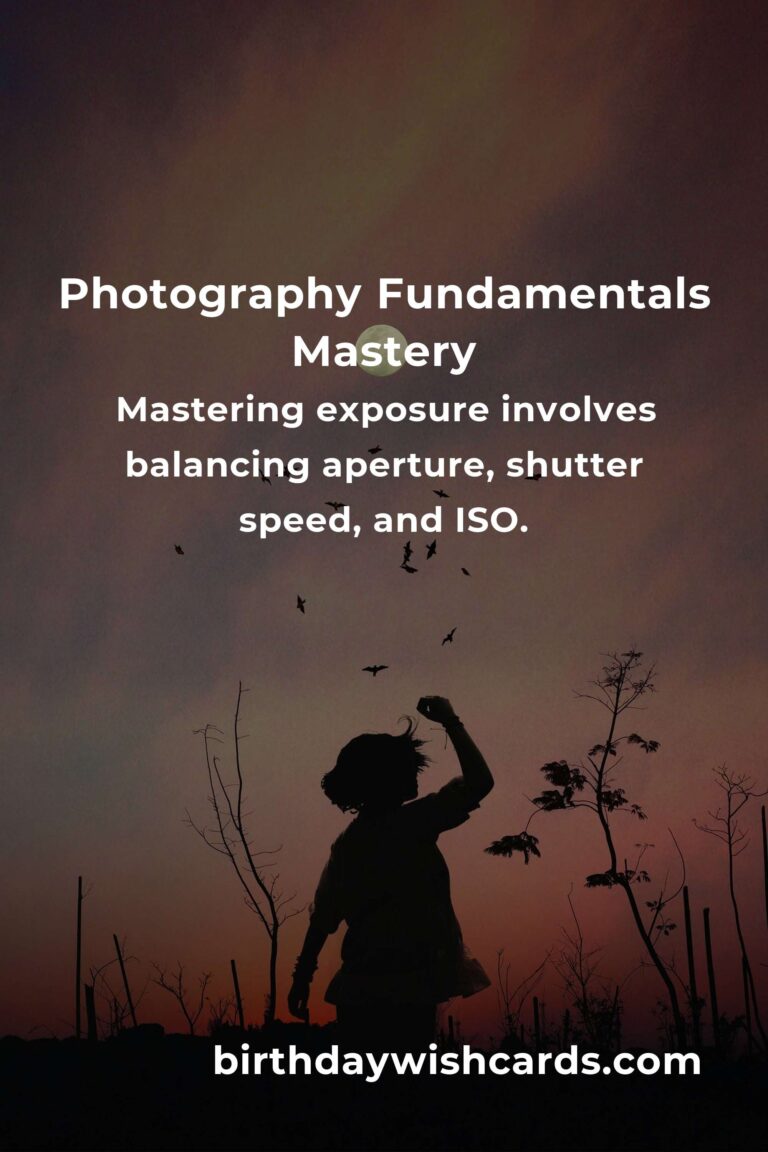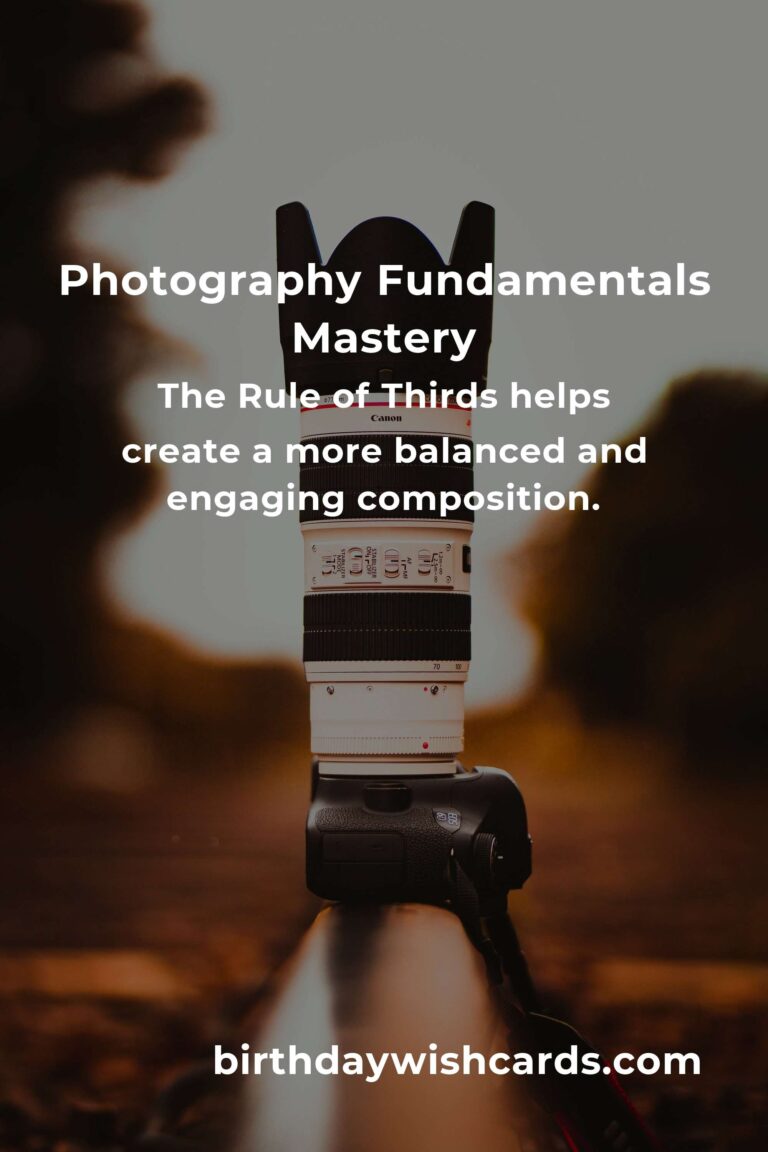
Photography is an art form that combines technical skills with creative vision. Whether you are a budding photographer or someone who has been clicking the shutter for years, understanding the fundamentals of photography is crucial for capturing stunning images. In this comprehensive guide, we will delve into the essential elements that form the backbone of photography and provide you with the knowledge needed to elevate your skills.
Understanding Exposure
Exposure is one of the core principles of photography. It determines how light or dark an image appears when captured. Mastering exposure involves balancing three main elements: aperture, shutter speed, and ISO.
Aperture refers to the opening in a camera lens through which light enters. It is measured in f-stops. A smaller f-stop number means a larger aperture, allowing more light to hit the sensor, which is ideal for low-light conditions. Conversely, a larger f-stop number indicates a smaller aperture, suitable for bright environments.
Shutter Speed controls the duration for which the camera’s sensor is exposed to light. A fast shutter speed freezes motion, making it perfect for action shots, while a slow shutter speed can create motion blur, adding a sense of movement to your images.
ISO measures the sensitivity of the camera’s sensor to light. A lower ISO is suitable for bright conditions, reducing noise and enhancing image quality. Higher ISO settings are beneficial in low-light situations but can introduce grain or noise into the image.
The Rule of Thirds
The Rule of Thirds is a compositional guideline that suggests dividing an image into nine equal segments, using two horizontal and two vertical lines. By placing your subject or key elements along these lines or at their intersections, you can create a more balanced and engaging composition.
Using the Rule of Thirds helps photographers avoid placing the subject in the center of the frame, which can often result in a static and less interesting image. It encourages creativity and guides the viewer’s eye through the photograph.
Lighting Techniques
Lighting is a critical aspect of photography that can dramatically affect the mood and quality of an image. Understanding how to manipulate light, whether natural or artificial, is essential for any photographer.
Natural Light is often the most accessible and preferred source for many photographers. The quality of natural light changes throughout the day, with golden hours (shortly after sunrise and before sunset) providing soft, warm tones, and midday sun casting harsh shadows.
Artificial Light offers more control and consistency. Studio lights, flash units, and reflectors are tools that can help shape the light to achieve the desired effect. Experimenting with different lighting setups can lead to unique and creative outcomes.
Post-Processing Skills
Post-processing is an integral part of modern photography. It involves editing and enhancing images using software to achieve the desired look and feel. Familiarity with programs such as Adobe Photoshop or Lightroom can significantly improve the quality of your photographs.
Basic post-processing adjustments include cropping, adjusting exposure, contrast, saturation, and removing imperfections. Advanced techniques might involve retouching, color grading, and compositing multiple images.
Developing Your Style
Every photographer should strive to develop a unique style that reflects their personal vision and creativity. This can be achieved through experimentation, practice, and studying the work of other photographers. Over time, you will discover preferences in terms of subjects, techniques, and aesthetics that define your photographic identity.
Consistently practicing the fundamentals, exploring new techniques, and seeking feedback from peers are essential steps in honing your craft and developing a distinctive style.
Conclusion
Mastering the fundamentals of photography is an ongoing journey that requires dedication and passion. By understanding exposure, composition, lighting, and post-processing, you will be well-equipped to capture images that not only tell stories but also evoke emotions. Remember, the key to exceptional photography lies in the balance between technical know-how and creative expression.
Photography is an art form that combines technical skills with creative vision. Mastering exposure involves balancing aperture, shutter speed, and ISO. The Rule of Thirds helps create a more balanced and engaging composition. Lighting is a critical aspect of photography that affects the mood and quality of an image. Post-processing is an integral part of modern photography for editing and enhancing images. Developing a unique style reflects personal vision and creativity in photography.
#Photography #Exposure #Lighting #Composition #PostProcessing #PhotographyTips













